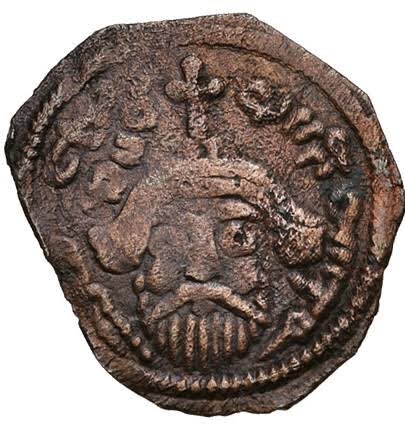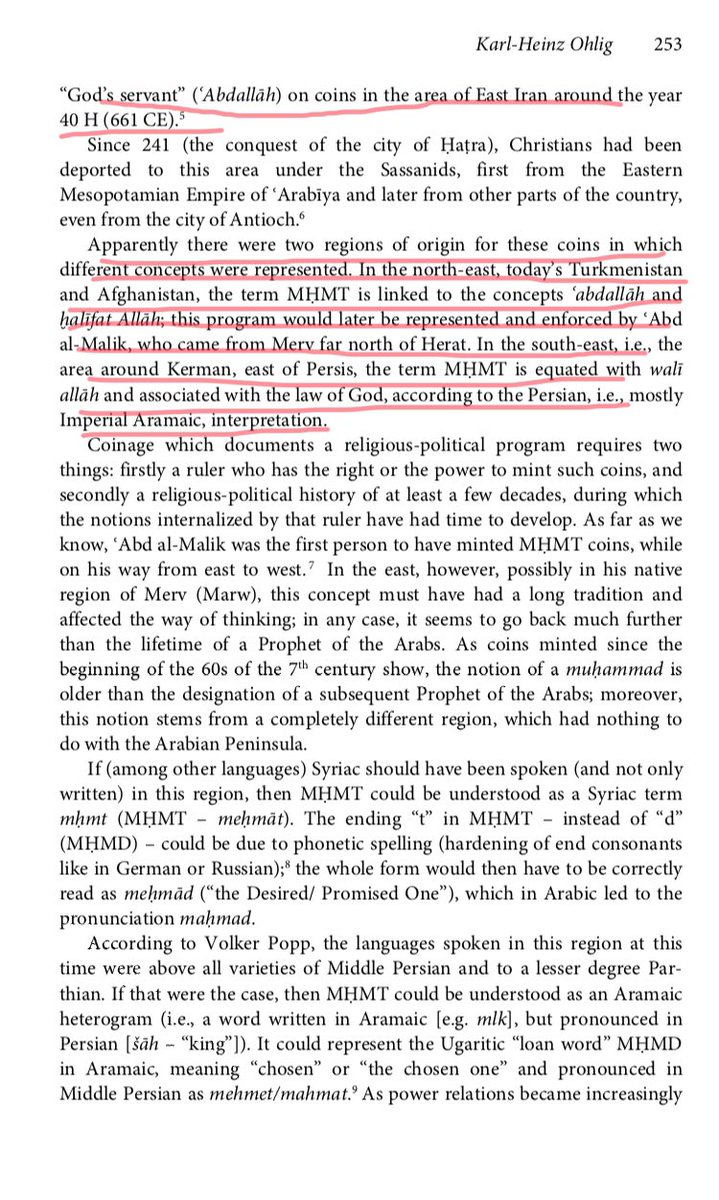1/n #SadarPranam to Ishvara within you dear @Burairss .
I’ll not waste space doing name calling (as you do) rather clarify how childish your arguments trying hard to prove historicity of Muhammad are. https://twitter.com/burairss/status/1343659708784099329
I’ll not waste space doing name calling (as you do) rather clarify how childish your arguments trying hard to prove historicity of Muhammad are. https://twitter.com/burairss/status/1343659708784099329
2/n Dear @Burairss , you cite Michel Penn but fail to understand that he too is making an assumption.
You need to read his book than article to understand the problem.
Penn talks about “tayyaye” as being word for “Arabs”. There is no discussion on “Mhmt”. https://twitter.com/burairss/status/1343659720532324352
You need to read his book than article to understand the problem.
Penn talks about “tayyaye” as being word for “Arabs”. There is no discussion on “Mhmt”. https://twitter.com/burairss/status/1343659720532324352
3/n This clearly indicates that he has assumed “Mhmt” to mean prophet of Islam. So @Burairss , it’s lame to use Penn’s work to establish what you wish to.
Syrians always used word “Mhmt” to represent “promised one” or “blessed one” etc.
Syrians always used word “Mhmt” to represent “promised one” or “blessed one” etc.
4/n So why can’t the leader of Arabs (whoever) he maybe addressed as the “blessed one”. This title could go to any who lead.
@Burairss , you should ask your leaders that why nowhere Prophet’s other names are used. He had a long name right?
@Burairss , you should ask your leaders that why nowhere Prophet’s other names are used. He had a long name right?
5/n The full name of the Prophet was “Abū al-Qāsim Muḥammad ibn ʿAbd Allāh ibn ʿAbd al-Muṭṭalib ibn Hāshim”.
Question arises, that why no Arab mention of Muhammad while the word appears in non Arabic texts?
Question arises, that why no Arab mention of Muhammad while the word appears in non Arabic texts?
6/n It has to be noted that first biography of Muhammad (Hisham) “appears” only, 2 centuries after the alleged death of him.
& the idea of existing oral tradition of Muhammad’s life also is expressed by literature “written 200 years post the death.”
& the idea of existing oral tradition of Muhammad’s life also is expressed by literature “written 200 years post the death.”
7/n Now @Burairss , what I mention in 5/n & 6/n has specific reason. While Penn doesn’t address the issue of language, others have done it.
I’m picking work of Karl- Heinz Ohlig, an expert from Germany.
I’m picking work of Karl- Heinz Ohlig, an expert from Germany.
8/n Ohlig establishes that the term “Muhammad” was honorary title of Jesus on the coinage of Arab rulers and on inscriptions in the second half of the 7th century and in the first half of the 8th century.
Check for the early coins of Abd-Al-Malik (Image 3).
Check for the early coins of Abd-Al-Malik (Image 3).
9/n If one watches sequence of issuing of coin by Abd Al-Malik carefully. He would find:
1)He first has cross with probable image of Jesus or own
2)Next he himself appears on coin & mentioning praises to self
3)Then finally appears Muhammad
PS: Malik’s name same as Prophet.
1)He first has cross with probable image of Jesus or own
2)Next he himself appears on coin & mentioning praises to self
3)Then finally appears Muhammad
PS: Malik’s name same as Prophet.
10/n Observe carefully. Ohligh mentions whole sequence for this.
Before Mhmt appears on coin, “Abdallah” servant of “God” had already appeared on coins in East Iran.
//Why no Muhammad but “Abdallah”. If Islam is already there & has perhaps a coin then why no “Muhammad”?//
Before Mhmt appears on coin, “Abdallah” servant of “God” had already appeared on coins in East Iran.
//Why no Muhammad but “Abdallah”. If Islam is already there & has perhaps a coin then why no “Muhammad”?//
11/n Ohligh further mentions, that there were two regions of origin for these coins in which different concepts existed:
1)In the North-east, (Turkmenistan & Afghanistan, the term MḤMT is linked to the conceptsʿabdallāh & ḫalīfat Allāh.
1)In the North-east, (Turkmenistan & Afghanistan, the term MḤMT is linked to the conceptsʿabdallāh & ḫalīfat Allāh.
12/n That idea would later be represented and enforced by ʿAbd al-Malik, who came from Merv far north of Herat.
2)In the south-east,(area around Kerman, east of Persis) the term MḤMT is equated with walī allāh & linked with the law of God, according to the Persian.
2)In the south-east,(area around Kerman, east of Persis) the term MḤMT is equated with walī allāh & linked with the law of God, according to the Persian.
13/n What he illustrates next is more baffling.
Coinage documenting a religious-political program requires two things:
1)A ruler who has the right or the power to mint such coins, and secondly a religious-political history of at least a few decades.
Coinage documenting a religious-political program requires two things:
1)A ruler who has the right or the power to mint such coins, and secondly a religious-political history of at least a few decades.
14/n We all are told, ʿAbd al-Malik was the first person to have minted MḤMT coins, while on his way from east to west. In the east, however, possibly in his native region of Merv. This concept must have had a long tradition and affected the way of thinking.
15/n But in any case, it seems to go back much further than the lifetime of a Prophet of the Arabs. As coins minted since the beginning of the 60s of the 7th century show, the notion of a muḥammad is older than the designation of a subsequent Prophet of the Arabs.
16/n Moreover , this notion stems from a completely different region, which had nothing to do with the Arabian Peninsula.
17/n If (among other languages) Syriac should have been spoken (and not only written) in this region, then MḤMT could be understood as a Syriac term mḥmt (MḤMT – meḥmāt).
18/n The ending “t” in MḤMT – instead of “d” (MḤMD) – could be due to phonetic spelling. The whole form would then have to be correctly read as meḥmād (“the Desired/ Promised One”), which in Arabic led to the pronunciation maḥmad.
19/n He cites Volker Popp.
/The languages spoken in this region at this time were above all varieties of Middle Persian and to a lesser degree Par- thian. If that were the case, then MḤMT could be understood as an Aramaic heterogram.
/The languages spoken in this region at this time were above all varieties of Middle Persian and to a lesser degree Par- thian. If that were the case, then MḤMT could be understood as an Aramaic heterogram.
20/n (i.e., a word written in Aramaic [e.g. mlk],but pronounced in Persian [šāh – “king”]). It could represent the Ugaritic”loan word” MḤMD in Aramaic, meaning “chosen” or “the chosen one” and pronounced in Middle Persian as mehmet/mahmat.
21/n As power relations became increasingly dominated by Arabs & those entitled to coinage turned more & more to Arabic as their lang of ref, the unvocalized term MḤMT had to be grammatically interpreted as an Arabic form, in our case the form “muḥam- mad”.
22/n This is passive participle of the second stem of “ḥ-m-d”, meaning “the praised one” or “the one to be praised”).
This is documented on bilingual coins from the year 60 AH (681 CE) on which MḤMT in Middle Persian and muḥammad in Arabic script are to be found side by side
This is documented on bilingual coins from the year 60 AH (681 CE) on which MḤMT in Middle Persian and muḥammad in Arabic script are to be found side by side
23/n Since the 60s AH (680s CE) the Arabic term muḥammad in Arabic characters is nearly the only form to be found on coins in the whole of the Syrian region.
24/n Dear @Burairss When the Arabic transcription became common practice, the Syriac meaning “the desired one” was replaced by the Arabic understanding: “the one to be praised” or “the praised one”.
25/n Dear Bandhu @Burairss , I’ll explain further in sometime. Till then digest this much.

 Read on Twitter
Read on Twitter











